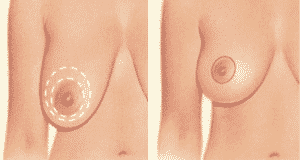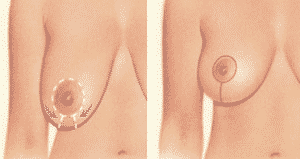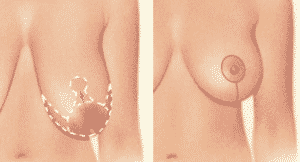
Reduction mammaplasty, commonly known as breast reduction, is a surgical procedure in which tissue, fat, and skin is removed from the breast, decreasing the size of the breast. The procedure may be done to reduce back strain, to improve the proportion of the breast to the rest of the body, or to correct a number of complications from overly large breasts.
During breast reduction surgery, Dr. Vallecillos will make incisions in the breast, remove the necessary tissue (this process may include the use of liposuction to remove fatty deposits), and reposition the areola and nipple.
Procedure Walk-Through
- Preparation: To prepare for breast reduction, patients are asked to cease the use of all blood-thinning drugs (including aspirin, herbs, vitamins) for two weeks before surgery. If you smoke, you should quit for at least two weeks before and after your operation. If you are over the age of 45, you will need to obtain medical clearance from an independent physician before undergoing surgery. Dr. Vallecillos may also require that you undergo a mammogram before the procedure, as well as after healing is complete. Typically, the breasts are also photographed and measured before and after the operation, to qualify results.
- Anesthesia: You will receive general anesthesia before undergoing breast reduction.
- Depending on your particular circumstances, Dr. Vallecillos may choose one of several options for incision patterns:


Around the areola and down to the bottom of the breast

Frequently Asked Questions
Who is a candidate for a breast reduction?
You should consider breast reduction if you are a woman whose breasts are fully developed and overly large and cause you chronic pain or discomfort, interfere with your daily activities, and/or are disproportionate to the rest of your body. Causes vary from heredity to weight fluctuations to aging, but no matter the cause, breast reduction surgery can help reduce your breasts and reposition your areola and nipple for smaller, more proportionate breasts.
What is the recovery time for a breast reduction?
After breast reduction surgery, you should expect some pain and discomfort during the first week after surgery. Pain medication and antibiotics may be prescribed to help alleviate discomfort and reduce the risk of infection. Bandages will cover the surgical site and drainage tubes will be inserted under the arms to remove any fluid that accumulates during healing. Breasts may remain swollen and sore for several weeks. Most patients are able to return to work within six weeks after surgery, but scarring will take significantly longer to fade.
Are there risks or side effects with a breast reduction?
Breast reduction surgery is often performed to reduce chronic aches and pains, especially in the shoulders and back. However, surgery does carry its own risks. Risks can include nerve damage, loss of sensitivity in the nipples, unfavorable scarring, and difficulty breastfeeding. Though rare, there is a possibility for asymmetry between the breasts. You should discuss all possible risks and side effects with Dr. Vallecillos prior to undergoing the procedure.
How long do the results last?
Breast reduction surgery will make a permanent change in the size and shape of the breasts. However, aging and loss of skin elasticity may cause later changes in the breast that would need to be addressed with an additional procedure, such as a breast lift.
